

Copyrightfriendly - home. Howitworks Comic1. Log in / create account (OpenID) Howitworks Comic1 page 1 of 4 Next Page Retrieved from " Categories:
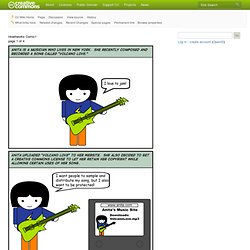
Videos. Creative Commons Kiwi This short and fun animation video by Creative Commons Aotearoa New Zealand explains the CC licenses.

A Shared Culture. Content Directories. Welcome to the Content Directories The following is a list of organizations and projects powered with Creative Commons licenses.
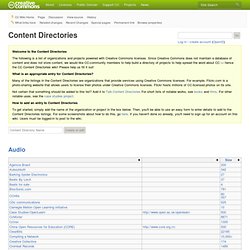
Since Creative Commons does not maintain a database of content and does not store content, we would like CC-community members to help build a directory of projects to help spread the word about CC — hence the CC Content Directories wiki! Please help us fill it out! What is an appropriate entry for Content Directories? Many of the listings in the Content Directories are organizations that provide services using Creative Commons licenses. Not certain that something should be added to this list? How to add an entry to Content Directories. Understanding Creative Commons Pt 1. This post and the next is a draft of an article I've been asked to write for a school library magazine on Creative Commons.
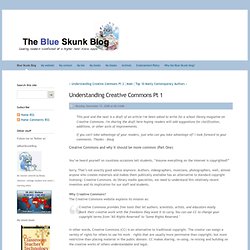
I'm sharing the draft here hoping readers will add suggestions for clarification, additions, or other sorts of improvements. If you can't take advantage of your readers, just who can you take advantage of? I look forward to your comments. Thanks - Doug Creative Commons and why it should be more common (Part One) You’ve heard yourself on countless occasions tell students, “Assume everything on the Internet is copyrighted!” Sorry. Creative Commons provides free tools that let authors, scientists, artists, and educators easily mark their creative work with the freedoms they want it to carry.
In other words, Creative Commons (CC) is an alternative to traditional copyright. Inspired by the Free Software Foundation’s GNU General Public License, the non-profit Creative Commons organization was founded in 2001 by Stanford Law professor Lawrence Lessig. Understanding Creative Commons Pt 2. This post and the previous post are a draft of an article I've been asked to write for a school library magazine on Creative Commons.
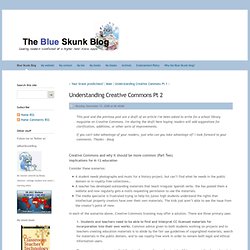
I'm sharing the draft here hoping readers will add suggestions for clarification, additions, or other sorts of improvements. If you can't take advantage of your readers, just who can you take advantage of? I look forward to your comments. Discovery Education: The Clip Art Gallery offers free educational clipart. Free Clipart - Clip Art Pictures - Graphics - Illustrations - Royalty Free Photographs.
Copyright Timeline: A History of Copyright in the United States. 18th-19th Centuries | 20th-21st Centuries | Bibliography and Resources.
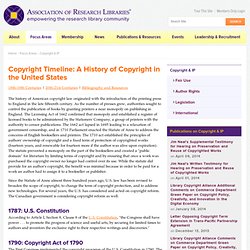
Copyrightchart. Copyright and Fair Use Guidelines for Teachers Teachers in the classroom make the decisions closest to the field of instruction and it is teachers that have been the greatest rights---rights that even their districts do not have.

This Copyright Chart was designed to inform teachers of what they may do under the law. Please reproduce it as necessary. Viruses and Risks - Exploits - Virus Protection. Our security research centers around the world provide unparalleled analysis of and protection from malware, security risks, vulnerabilities, and spam. If you have any thoughts for how we can improve the content on these pages, please take a moment to provide some Email LOW RISK:Use Basic Caution Malicious code and fraudulent messages often circulate via email.
Never open unsolicited attachments or hyperlinks, and always verify the source of any messages that ask you for sensitive information. Web Activities Although no widespread attacks are currently targeting web users, take normal precautions while viewing sites because of ongoing threats such as script-based attacks and phishing attacks that use fake sites. Instant Messaging Currently there are no widespread outbreaks of malicious code circulating via instant messaging. File Sharing Although attackers often use this medium to distribute trojan applications and malicious code, no high-profile threats are currently affecting the medium. What we detect. What we detect Who creates malware and why?
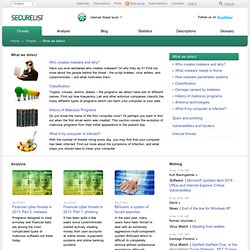
Have you ever wondered who creates malware? Or why they do it? Find out more about the people behind the threat - the script kiddies, virus writers, and cybercriminals – and what motivates them. Classification Trojans, viruses, worms, dialers – the programs we detect have lots of different names. Computer Virus Attacks, Information, News, Security, Detection and Removal. Ten Commandments of Computer Ethics. The Ten Commandments of Computer Ethics were created in 1992 by the Computer Ethics Institute.

The commandments were introduced in the paper "In Pursuit of a 'Ten Commandments' for Computer Ethics" by Ramon C. Barquin as a means to create "a set of standards to guide and instruct people in the ethical use of computers. " [1] The Ten Commandments of Computer Ethics copies the style of the Ten Commandments from The Bible and uses the archaic "thou shalt" and "thou shalt not" found in the King James version.
The commandments have been widely quoted in computer ethics literature [2] but also have been criticized by both the hacker community [3] and some in academia. For instance, Dr.